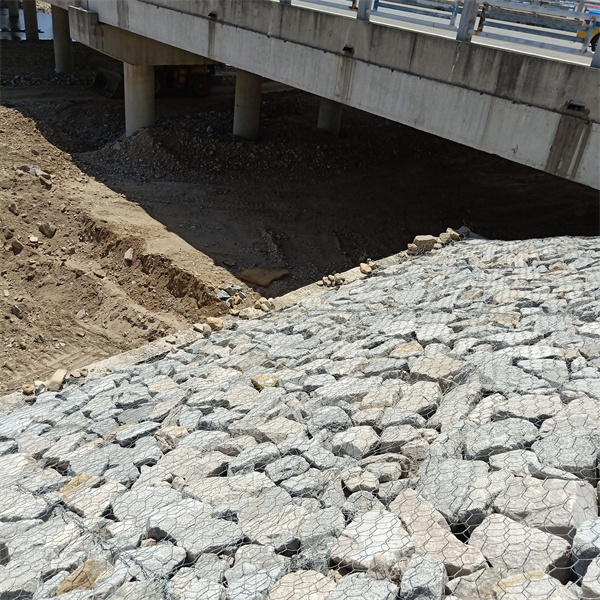Abu . 17, 2024 19:11 Back to list
Manufacturers of Gabion Wire Panels and Their Key Features for Landscaping Projects
Gabion Wire Panels Manufacturers An Overview
Gabion wire panels have become increasingly popular in various construction and landscaping applications due to their durability, versatility, and aesthetic appeal. These structures, typically made of a grid of steel wire, are filled with rocks or other materials, creating robust barriers, retaining walls, and decorative elements. This article explores the gabion wire panels manufacturing industry, highlighting key manufacturers, common applications, and the benefits of choosing gabion structures.
The Manufacturing Process
The manufacturing of gabion wire panels involves several steps to ensure quality and longevity. Initially, high-quality steel wire is sourced and treated to prevent corrosion. Galvanization is a common process, wherein the wire is coated with zinc to enhance its resistance to rust and environmental wear. Some manufacturers also offer additional polymer coatings for even greater longevity.
The wire is then woven into various mesh configurations, allowing for flexibility in design and application. The mesh is often welded to create strong joints, capable of withstanding significant weight and pressure once filled. After fabrication, the panels are subjected to rigorous quality control to meet industry standards.
Leading Manufacturers
In recent years, the market for gabion wire panels has seen a surge in demand, leading to the emergence of several notable manufacturers. Companies such as Vittorio Marella, WireMesh, and GabionTech are recognized for their high-quality products and innovative designs. These manufacturers offer a range of gabion products, including standard panels, custom sizes, and various mesh types to cater to different project requirements.
Moreover, many manufacturers are increasingly embracing sustainable practices by sourcing recycled materials and implementing eco-friendly production methods. This commitment not only helps reduce the environmental impact but also appeals to an increasingly eco-conscious market.
Applications of Gabion Wire Panels
gabion wire panels manufacturers

Gabion wire panels are used in a diverse array of applications. In civil engineering, they are commonly employed in the construction of retaining walls, slope stabilization, and erosion control. Their permeable structure allows water to flow through, reducing pressure build-up behind walls and minimizing the risk of failure.
In landscaping, gabion wire panels serve as attractive design elements. They can be utilized as garden borders, seating areas, or even decorative features when filled with aesthetically pleasing stones. Their versatility allows architects and designers to integrate them into various outdoor settings seamlessly.
Additionally, gabions are increasingly popular in residential applications. Homeowners can use them to create unique outdoor spaces, manage stormwater, or enhance the structural integrity of their properties. With the growing trend of natural and sustainable landscaping, gabion panels offer a solution that harmonizes with the environment.
Benefits of Gabion Wire Panels
One of the primary advantages of gabion wire panels is their strength and durability. Constructed from robust materials, they can withstand harsh environmental conditions, making them an ideal choice for both temporary and permanent installations.
Another significant benefit is their ease of installation. Gabion structures can be assembled quickly, often requiring minimal groundwork, making them a cost-effective solution for many projects. Furthermore, their flexibility allows for various configurations and sizes, accommodating different design visions and functional needs.
Lastly, gabion wire panels promote ecological balance. By using natural materials for filling, they support local flora and fauna, contributing to biodiversity. Their permeable nature enhances drainage, reducing the risk of flooding and soil erosion in surrounding areas.
Conclusion
Gabion wire panels represent a dynamic and environmentally friendly choice for construction and landscaping applications. With numerous manufacturers providing innovative products and solutions, these panels are poised to play an increasingly significant role in sustainable building practices. As demand continues to grow, the industry will likely evolve, promoting even more advanced and eco-friendly manufacturing techniques to meet the needs of a changing market.
-
Why PVC Coated Gabion Mattress Is the Best Solution for Long-Term Erosion Control
NewsMay.23,2025
-
Gabion Wire Mesh: The Reinforced Solution for Modern Construction and Landscape Design
NewsMay.23,2025
-
Gabion Wall: The Flexible, Seismic-Resistant Solution for Modern Landscaping and Construction
NewsMay.23,2025
-
Gabion Wall Solutions: The Durable, Decorative, and Affordable Choice for Every Landscape
NewsMay.23,2025
-
Gabion Basket: The Durable and Flexible Alternative to Traditional Retaining Walls
NewsMay.23,2025
-
Gabion Basket: The Proven Solution for Slope Stability and Flood Control
NewsMay.23,2025
-
Versatility of Chain Link Fence Gabion
NewsMay.13,2025






